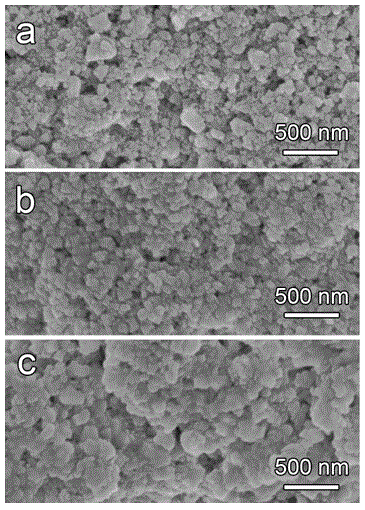Technology using CuCl nanocrystals to photo-catalytically degrade dye pollutants under visible light
A nanocrystal and visible light technology, applied in the protection device against harmful chemicals, etc., can solve the problems of unsatisfactory catalyst stability, complex post-treatment of sludge, limited absorption, etc., and achieve excellent photocatalytic stability and excellent photocatalytic performance , the effect of easy operation
- Summary
- Abstract
- Description
- Claims
- Application Information
AI Technical Summary
Problems solved by technology
Method used
Image
Examples
Embodiment 1
[0035] Weigh 1.92gCuSO 4 and 6g of polyvinylpyrrolidone were dissolved in 100mL of water, slowly added dropwise to the above solution with 1M sodium hydroxide, and the pH of the solution was adjusted to 11. Then 1.52g of hydroxylamine hydrochloride was added thereto, and heated to 80°C for reaction. After reacting for 4 hours, the reaction solution was cooled to room temperature and centrifuged to obtain the product. The scanning electron microscope photos of the products are shown in figure 1 a, X-ray diffraction pattern see figure 1 b.
Embodiment 2
[0037] Weigh 1.92gCuSO 4and 6g of polyvinylpyrrolidone were dissolved in 100mL of water, slowly added dropwise to the above solution with 1M sodium hydroxide, and the pH of the solution was adjusted to 5. Then 1.52g of hydroxylamine hydrochloride was added thereto, and heated to 80°C for reaction. After reacting for 4 hours, the reaction solution was cooled to room temperature and centrifuged to obtain the product.
Embodiment 3
[0039] Weigh 1.92gCuSO 4 and 6g of polyvinylpyrrolidone were dissolved in 100mL of water, slowly added dropwise to the above solution with 1M sodium hydroxide, and the pH of the solution was adjusted to 7. Then 1.52g of hydroxylamine hydrochloride was added thereto, and heated to 80°C for reaction. After reacting for 4 hours, the reaction solution was cooled to room temperature and centrifuged to obtain the product.
PUM
 Login to View More
Login to View More Abstract
Description
Claims
Application Information
 Login to View More
Login to View More - R&D Engineer
- R&D Manager
- IP Professional
- Industry Leading Data Capabilities
- Powerful AI technology
- Patent DNA Extraction
Browse by: Latest US Patents, China's latest patents, Technical Efficacy Thesaurus, Application Domain, Technology Topic, Popular Technical Reports.
© 2024 PatSnap. All rights reserved.Legal|Privacy policy|Modern Slavery Act Transparency Statement|Sitemap|About US| Contact US: help@patsnap.com










